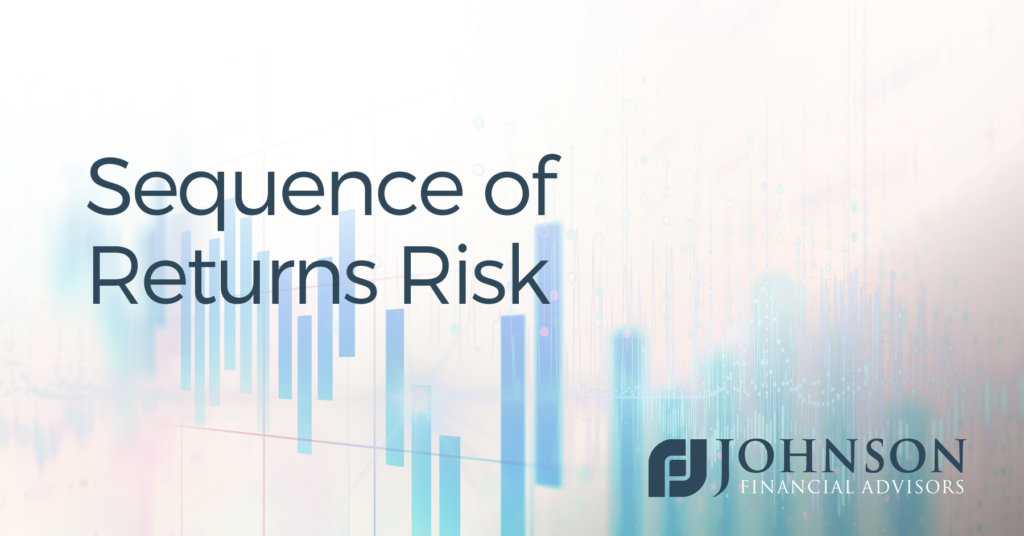
Sequence of Returns Risk
From young adults beginning a career to current retirees, most Americans share a common concern. Will they be able to maintain their desired lifestyle throughout retirement? They are aware of common obstacles: longevity, health care costs, inflation and potential long-term care. Recent market volatility is drawing attention to a less understood challenge – sequence of returns risk – among those preparing to retire or those who recently retired.
Here is a simple explanation of sequence of returns risk: how the stock market performs in the years directly preceding and shortly after retirement can have a disproportionate impact on how quickly or slowly an investor’s money is consumed.
If the value of a new retiree’s investments has increased around the time of retirement, necessary withdrawals to cover their fixed costs will amount to a smaller percentage of their retirement assets, leaving more in their accounts to grow in coming years. The reverse also applies. If the new retiree’s investments have recently decreased in value, they will need to withdraw a greater percentage of assets for living expenses, and they’ll have fewer assets left to grow.
Imagine how much more a 30 percent drop would hurt a 65-year-old with a $2 million portfolio than it would hit a 45-year-old with $400,000 in investments. The 65-year-old loses more immediately while they are withdrawing living expenses from their portfolio at the same time, plus they have less time to recover their losses. Consequently, two different individuals with the same portfolios who retire at the same age and spend the same amount but retire at different times could have dramatically different situations 20 years into retirement – even if the long-term market averages are similar.
There are several approaches to minimize sequence of returns risk. One is to consider withdrawing a constant percentage from your nest egg, regardless of inflation or whether the portfolio has shrunk due to falling stock prices. Another is to reduce volatility on assets you’ll need to tap in the early years using a “bucket” approach, which separates five to 10 years of income into lower-risk accounts with the remainder invested in higher risk accounts to be used for income later in the plan.
Whether you’re already retired, you’re approaching retirement or it’s a long way off, we can help you evaluate different approaches to minimize sequence of returns risk and create an asset allocation strategy designed to safeguard your future.
